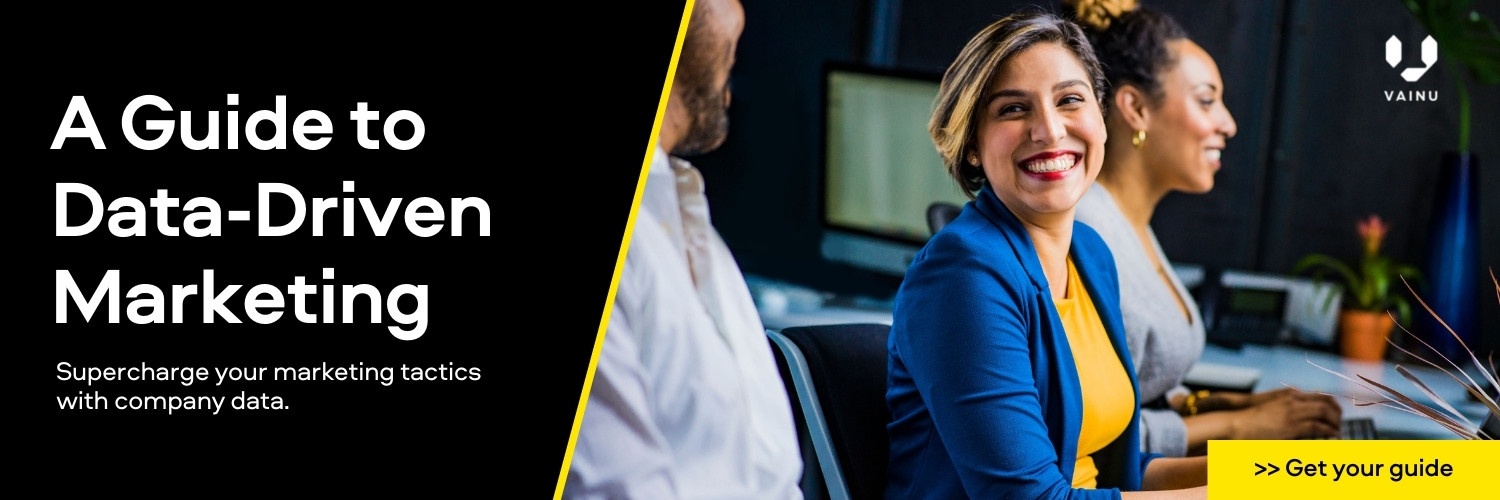Gated Content: How to Use it The Right Way
Nine out of ten marketers diss gated content. And yet, nine out of ten marketers use gated content as a way of bringing in leads.
No other lead generation strategy is more divisive than gated content. Hiding eBooks, white papers, or templates behind a wall has become a standard solution to convert visitors into qualified leads. However, in a world more conscious about privacy than ever, is the promise of mind-blowing content in exchange for their email address really the best way to go about building your brand and business?
In this article, we'll go through the pros and cons of gated content and see a few strategies to create gated content that matters and doesn't alienate your audience.
But let's start with a definition.
What is gated content?
Gated content refers to marketing assets that aren't publicly available. Essentially, the type of content is locked, and your visitors can only gain access to it after they've provided some information, usually their email address. You offer valuable content to entice prospects to take action.
In contrast, non-gated means content that is publicly accessible by anyone who visits your site. Non-gated content doesn't require any special permissions or privileges.
This won't come as a shock to you: gated content has a bad reputation. This lead generation tactic has been so overused in the past that a big chunk of readers might be turned away.
The gated content debate
This won't come as a shock to you: gated content has a bad reputation. This lead generation tactic has been so overused in the past that a big chunk of readers might be turned away. A capture form at the wrong state of the customer's journeys will discourage potential customers from continued engagement with your brand.
But how did we get here? Let's travel back in time to the dawn of inbound marketing.
How the gated content fashion became "best practice"
In 2006 HubSpot launched and coined the inbound lead generation methodology. The idea was simple: attract customers by creating valuable content and experiences tailored to them. All marketers need is a capture form to gate premium and keep collecting leads.
All of a sudden, businesses left and right started creating all kinds of creative and engaging content. Capture forms became the norm. Surprisingly, that worked for a long time. People were more than willing to leave their contact details in exchange for eBooks, industry reports, and definitive guides.
The pursuit for growth is never-ending, though. Sales teams kept craving for more leads, and marketers started to create a little less fantastic content.
At the same time, customers began to demand an even more personalized journey. Marketers responded by adding a few extra fields to capture forms to know about their leads.
It became tedious. Big players like Drift started advocating for non-gated content. Fast forward a few years, and the debate over gated content is far from being settled.
Gated content isn't going anywhere yet
If you ask Edward Ford, Demand Generation Director at Supermetrics, he will tell you that he "doesn't believe gated content is on its way out per se" and "might have more of a role to play in a sales assisted funnel with larger deal sizes." Mind one thing, though. The "bar for the quality needed to justify gating content is getting higher," he adds.
More than ever, people want to consume content. They're willing to sign up for your newsletter, learn more about your business, get a demo or a free trial. Ultimately, they're looking to buy what you're selling. Victor Ijidola, CEO at Premium Content Shop, argues that "you need to be very transparent about the direct value your visitors get from you gating your content piece. When asking for their emails with no benefit attached for them, in many cases, you'll end up stressing your audience, making it harder for them to get to the bottom of the funnel, or worse, you'll have people signing up with bad emails."
More than ever, people want to consume content. They're willing to sign up for your newsletter, learn more about your business, get a demo or a free trial. Ultimately, they're looking to buy what you're selling.
Those two arguments reveal two essential factors you need to consider if you want to use gated content as part of your lead generation:
- Quality first: This is as obvious as it gets, but your gated content should be of enough quality to warrant the price of an email address. Make your visitors feel they're downloading genuinely premium and original content they can't find elsewhere. Low-quality content will make your audience disappointed. That can have a significant impact on how they perceive your brand and product.
- Experiment with different formats: Most gated content pieces are eBooks in PDF format. These files are difficult to consume—they aren't exactly compatible with mobile screens. Instead, you create an email course. It's easier to personalize, and you can more easily update down the line. You don't have to sell anything but focus on educating your audience. It will your prospects dive deeply into a full funnel.

Ok… so when should I use gated content?
As long as marketers need leads, gated content will continue to be a technique that has a place in the marketing mix. The following are some concrete situations where gated content can be your go-to technique to generate leads.
1. High touch sales
Your average deal size and your sales model can determine whether or not you should gate a piece of content. Suppose your prospects require many live demos, sales meetings during the buying process, gated content. In that case, you may very well want to gate some of your content to facilitate nurturing workflow and facilitate a prioritizing model for the sales team. In other words, long sales cycles with high deal sizes will benefit from gated content.
2. Seize lower-intent visitors
Another great way to utilize gated content is as a lower-intent conversion point. This will allow you to validate use cases or messaging and gain information about your audience, before doubling down on PPC or other marketing campaigns.
Anna Holopainen, Head of Marketing at Sniffie, explains this tactic with a good example:
"As you may already know, not all content is created equal. Product literature, customer references, or pricing information should never live behind a lead form because these pieces should be available to potential buyers at a moment's notice. You simply want all the eyeballs on them that you can possibly get.
However, you might still occasionally want to gate a middle-of-the-funnel product comparison guide just to get an idea of who's considering your product against your biggest competitors.
This way, you'll be able to follow up with the leads who've downloaded the guide and start a conversation when it counts."
3. Your gated content performs very well
As we wrote earlier, if your content has a high value associated with it, people will be more than willing to sign up for it. So, why fix what isn't broken? If gated content has high visit-to lead rates, it's working.
Still hesitant? Do a content audit and see how landing pages are performing. The average landing page conversion rate falls around 2.35 percent. If your landing page conversion rates are less than three percent, try ungating them and test if you experience an increase in traffic that can drive people to other gated content.
4. Your content is extremely high value
Some content is genuinely worth the price of admission. If you are producing original research or creating white papers with insights or thought leadership from sought-after authors, the odds are that your website visitors will willingly fill out a form to get it.
Why have non-gated and gated content?
As you can see, there's a time and a place for both non-gated and gated content. You should use them in conjunction with a strategy to achieve different goals. They serve unique purposes in the lead generation process.
Let's see how.
Attract visitors to your website with non-gated content
While it may seem like non-gated content doesn't play a role in lead generation, the opposite is true: non-gated content is the lure that draws visitors in. When uncertain about something, an individual will generally turn to search engines. It is here that non-gated content shines. If targeted and executed effectively, your non-gated content should contain the answer to a searcher's query. A simplified searcher process might look something like this:
- Individual encounters a problem
- Individual turns to search engines to find a solution to said problem
- Individual finds your article on said problem
- Individual's problem gets solved
- Individual leaves your website
In this way, non-gated content allows individuals to interact with your organization on their terms while also providing your organization an opportunity to aid the searcher, make an impression, and potentially initiate or develop their interest in your product offering—a pretty sweet deal. On top of that, there is the mere exposure effect to take into account. This psychological phenomenon supposes that people develop a preference for a thing simply because they become more familiar with it. In this way, merely getting a relevant individual to interact with your organization positively is a win for your brand.
Nonetheless, you probably noticed non-gated content's weakness—there's no incentive for your visitor to stay after they have gotten the information they were looking for. It's here that gated content enters the scene.
Increase conversions with gated content
If non-gated content was the lure that draws visitors to your website, then gated content is the way you reel them in. Remember: Your lead generation strategies are supposed to generate your organization's leads, not visitors. Leads are actionable, visitors are not. So, for an individual to be a lead, your organization needs to be able to contact them. This is the basic premise of gated content.
Theoretically, you can make any content into gated content. However, in practice, you'll generally want to make your gated content distinct and value-adding enough that a visitor, a) wants to consume it and b) is willing to divulge their contact information to get it.
Generally, non-gated and gated content are best used together. How does this look in practice? Well, gated content will often be referenced in non-gated content, e.g., this is a non-gated blog post, but it references our new marketing ebook, which is gated. For this to work, the non-gated content should satiate the visitor's curiosity and answer any queries that they might have. Then, the gated content could be a more comprehensive, practical, or detailed resource that builds upon the information provided in the non-gated content. That way, the visitor gets the information they were looking for and knows where to go if they want to know even more on the subject matter.
Bottom line: Focus on driving consistent, never-ending value from ungated content—build an audience. Then go ALL IN on really good, really actionable, really valuable gated content.
Capture forms are obsolete
While gated content will continue to have a role to play, long capture forms are already a thing of the past. Every extra field you add to your capture form will lower your conversion rates. Therefore, you should only be asking for information that is essential to be able to contact your leads and qualify them. In fact, an email address might be enough.
One way to remove fields is by using a company data platform to fill in the fields you'd like to know about the company your lead works for. All you need to do is integrate your CRM and marketing automation systems with a tool like Vainu. When the lead comes in, Vainu will match the email domain information and enrich your records.
Ready to supercharge your marketing systems with company data?
